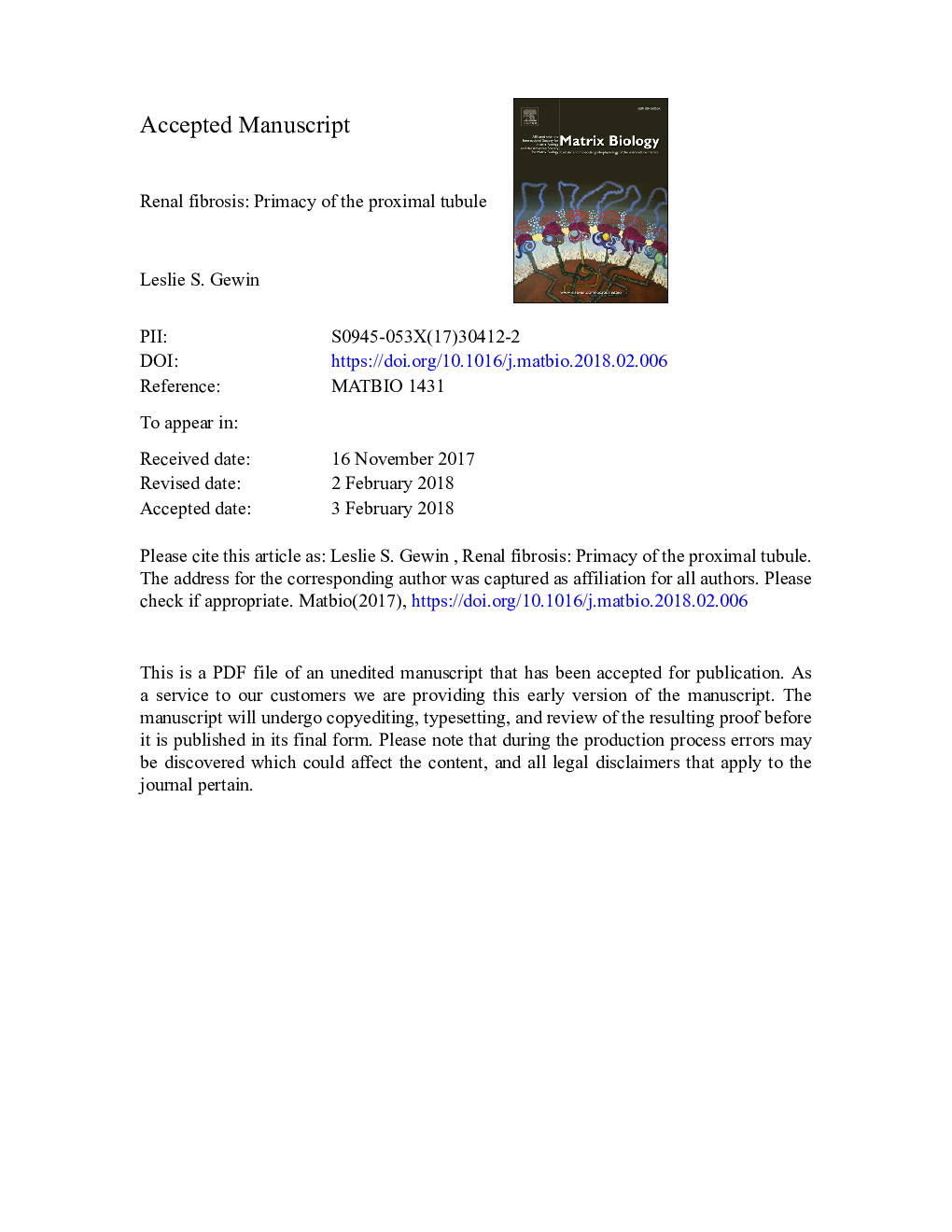| Article ID | Journal | Published Year | Pages | File Type |
|---|---|---|---|---|
| 8454999 | Matrix Biology | 2018 | 37 Pages |
Abstract
Tubulointerstitial fibrosis (TIF) is the hallmark of chronic kidney disease and best predictor of renal survival. Many different cell types contribute to TIF progression including tubular epithelial cells, myofibroblasts, endothelia, and inflammatory cells. Previously, most of the attention has centered on myofibroblasts given their central importance in extracellular matrix production. However, emerging data focuses on how the response of the proximal tubule, a specialized epithelial segment vulnerable to injury, plays a central role in TIF progression. Several proximal tubular responses such as de-differentiation, cell cycle changes, autophagy, and metabolic changes may be adaptive initially, but can lead to maladaptive responses that promote TIF both through autocrine and paracrine effects. This review discusses the current paradigm of TIF progression and the increasingly important role of the proximal tubule in promoting TIF both in tubulointerstitial and glomerular injuries. A better understanding and appreciation of the role of the proximal tubule in TIF has important implications for therapeutic strategies to halt chronic kidney disease progression.
Keywords
ECMSASPNLRP3ZO-1TIFFSGSTIMP-1SGLT2UUODTRUPRTGF-βPPARαMCP-1CTGFAKIMmpsα-SMAEGFNod-like receptor family, pyrin domain containing 3PDGF-βnatural killerI/Racute kidney injuryUnilateral ureteral obstructionischemia/reperfusionchronic kidney diseasetransforming growth factor-βEMTsodium-glucose cotransporter 2Dendritic cellsepidermal growth factorplatelet-derived growth factor-βVascular Endothelial Growth Factor (VEGF)Senescence-associated secretory phenotypeTubulointerstitial fibrosisExtracellular matrixMetabolismMatrix metalloproteinasesTissue inhibitor of metalloproteinaseCKDUnfolded protein responsemonocyte chemoattractant protein-1ProteinuriaCell cycleFocal segmental glomerulosclerosisDiphtheria Toxin Receptorperoxisome proliferator-activated receptor α
Related Topics
Life Sciences
Biochemistry, Genetics and Molecular Biology
Cancer Research
Authors
Leslie S. Gewin,
